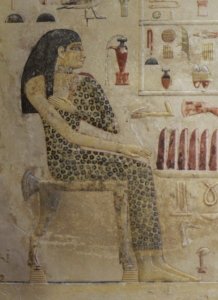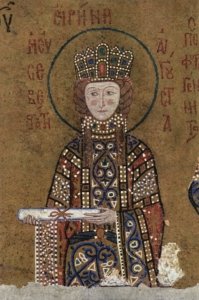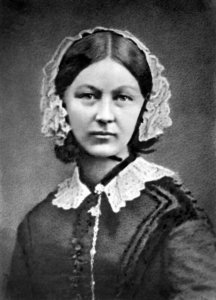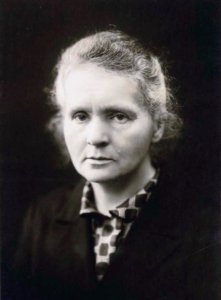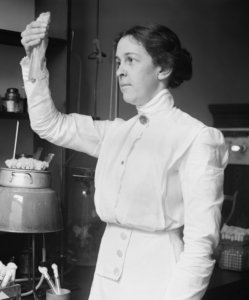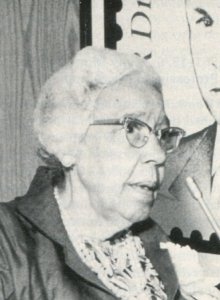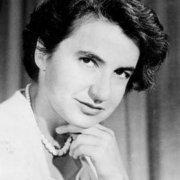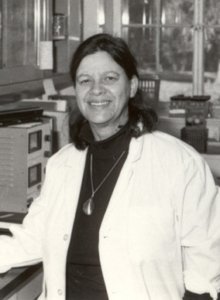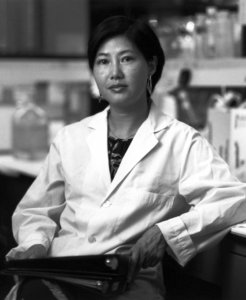10 Women in History Who Helped Make the World a Healthier Place
From Ancient Egypt to the US Department of Agriculture, women throughout history have helped make the world a healthier place. We’re celebrating Women’s History Month by spotlighting ten of them.
Depiction of an Ancient Egyptian noblewoman c. 2500 BCE, Wikipedia Commons
1. Merit-Ptah (c. 2700 BCE)
The first woman known by name in the history of medicine, Merit-Ptah was appointed chief physician to the pharaoh’s court during Egypt’s Early Dynastic Period.
Not only did she practice medicine, her title indicates that she likely trained other physicians (all-female medical schools were commonplace at the time) and personally attended to the pharaoh.
2. Dobrodeia of Kiev (c. 1100-1131)
Besides being a Russian princess and a member of the Byzantine imperial court in Constantinople, Dobrodeia of Kiev published the first medical treatise known to be written by a woman.
“Ointments” summarized Dobrodeia’s extensive research and practical experience with medical treatments. Surviving fragments of her widely-circulated writings are still preserved in the historic Medici Library in Florence.
Depiction of a Byzantine noblewoman c. 10th century AD, Wikipedia Commons
3. Loredana Marcello (c. 1533-1572)
Loredana Marcello, Dogaressa of the Republic of Venice, was known for being an exemplary Renaissance woman. She was especially adept at botany and developed recipes for treating the plague.
Historians note that Marcello’s botanical research and remedies—which were presumably soothing rather than curative—were put to good use during a plague epidemic that unfolded after her death.
4. Florence Nightingale (1820-1910)
Florence Nightingale once said, “Wise and humane management of the patient is the best safeguard against infection.” While working as a nurse on the front lines of the Crimean War, she realized that improving hospital living conditions could prevent deaths.
After the war, Nightingale returned home to Britain, where she opened the world’s first secular nursing school and innovated hospital hygiene and patient management practices. Her legacy lives on in the nursing profession as we know it today.
5. Marie Curie (1867-1934)
The only person to win a Noble Prize in two different sciences, Marie Skodowska Curie is famous for discovering radium and developing the theory of radioactivity (a term that she coined.)
While working in Paris, the Polish-born scientist became especially interested in the therapeutic uses of radium. When World War I began, Curie advocated for the use of portable X-ray machines to improve diagnostics and alleviate suffering in the field.
6. Alice Evans (1881-1975)
Anybody who has drunk milk without getting sick has Alice Evans to thank. Evans studied pathogenic bacteria in dairy products at the United States Department of Agriculture, where she was the first woman bacteriologist to hold a permanent position.
Evans ensured the implementation of pasteurization by the American dairy industry. Her research demonstrated that pasteurizing raw milk, even from seemingly healthy cows, would prevent the spread of disease to humans. Despite naysayers, she turned out to be right.
7. Ruth Ella Moore (1903-1994)
By completing a doctorate in bacteriology, Ruth Ella Moore became the first African-American woman to earn a PhD in the life sciences. She was also appointed Head of the Department of Bacteriology at Howard University College of Medicine in Washington, D.C.
Besides overcoming social barriers in her field, Moore focused her research on Enterobacteriaceae, a family of bacteria that includes Salmonella and E. coli. She also published a study on the relationship between gut microorganisms and antibiotics.
8. Rosalind Franklin (1920-1958)
Rosalind Franklin was researching the elusive DNA molecule when her King’s College laboratory produced Photo 51 in 1952. This groundbreaking data contributed to the discovery of the double helix structure of DNA, for which James Watson and Francis Crick received a Nobel Prize after Franklin’s untimely death.
Of the Watson-Crick Model of DNA, which was published in 1953, Franklin reportedly said, “It’s very pretty, but how are they going to prove it?”
9. Esther Lederberg (1922-2006)
While working with a strain of E. coli as a PhD student in Wisconsin, Esther Lederberg isolated the bacterial virus lambda phage (λ). This discovery revolutionized the field of bacterial genetics.
Lederberg also helped develop a reliable method of replica plating, a technique used to efficiently reproduce large numbers of bacterial colonies without streaking individual Petri plates.
10. Flossie Wong-Staal (1947-Present)
No women in her family had studied science or even worked outside the home—but that didn’t stop 18-year-old Flossie Wong-Staal from leaving Hong Kong to pursue a bacteriology degree in the United States.
The trailblazing virologist later became part of a research team that identified HIV (human immunodeficiency virus) as the cause of AIDS. Wong-Staal was the first researcher to clone and create a genetic mapping of the virus, making the development of HIV blood tests possible.

